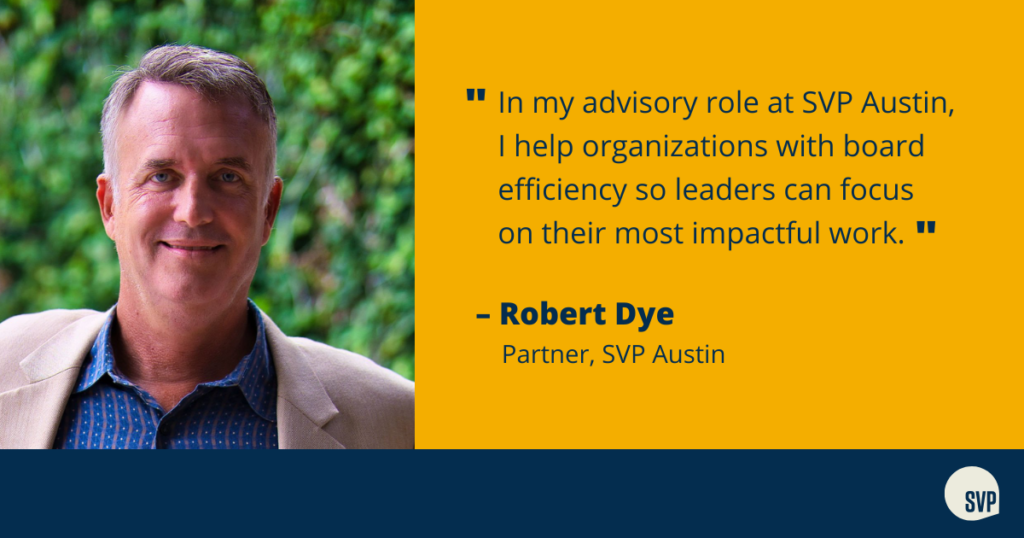Robert Dye, SVP Austin
Meet Robert Dye, dedicated partner and Advisory Services Chair with SVP Austin. With a background in entrepreneurship and change management, Robert brings a wealth of expertise to his work with SVP. He sat down with us to share his journey, his unique perspective on nonprofit consulting, and the impactful projects he’s working on.

How long have you been involved with SVP Austin?
I’ve been with SVP for three years now. I spent the first year as a general partner, and then I stepped into this advisory role about two years ago.
My journey with SVP started during a project I was working on with the National Alliance on Mental Illness (NAMI). I was advising on a legacy transition project for their executive director, and several other advisors were involved, including a team from SVP Austin. During that time, I got to know some of the SVP folks, and they invited me to join. It wasn’t long before I was all in.
In your advisory role, what does your work typically involve?
In essence, I’m doing the same type of work I used to do in the for-profit sector— only now, I’m doing it for nonprofits. My job is to diagnose organizational issues and bring the right solutions, whether that’s strategic consulting, financial guidance, or structural changes. We’ve developed a project catalog that includes about 60 different project types covering areas like technology, marketing, coaching, and more, so we can tailor our support based on each nonprofit’s unique needs.
One critical part of my role is assessing which organizations we can help most effectively. About 25% of the time, we will decline an engagement if there’s too much financial or leadership instability. Of the remaining projects, 70% of the time we diagnose a more pressing issue than the one we were presented with, and we change the project scope. For the projects we do take on, we aim to deliver advice that’s as good or better than if they paid for it.
What’s one of your favorite projects so far?
I’m currently working on a project with the Texas Advocacy Project (TAP), which has been one of the most challenging and rewarding projects I’ve taken on. TAP is a 50-person organization that provides legal and advocacy services for victims of abuse. They’ve been serving roughly the same number of cases for over a decade, and their executive director was eager to find ways to break through that ceiling.
For the past seven months, we’ve been restructuring their organization. We’ve adjusted roles, reorganized teams, and established more efficient operational processes. We are about to present the TAP board with a 3-year plan that would help double their case load in year one, cut the time to reach a TAP attorney from three weeks to instantaneous in year 2, and, once TAP is replatformed, expand into a second state in year 3.
With your background in both for-profit and nonprofit sectors, what’s been the most notable difference?
In both worlds, there’s often a fair amount of organizational messiness. However, I’d say the board structure in nonprofits is one of the biggest differences. In my work with TAP, for example, the executive director spends over 50% of her time dealing with internal issues and another 40% with board matters, leaving very little time for fundraising and external relations, which should be her primary focus.
Navigating this dynamic can be tricky, as the board’s involvement often means the CEO spends more time on internal management than they’d like. That’s something I help nonprofits address, aiming to equip organizations to be efficient with their boards so leaders can focus on their most impactful work.


